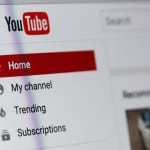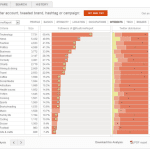YouTube is once again in hot water for running ads on channels promoting disturbing content, a CNN investigation has uncovered. More than 300 organizations had their ads running on channels promoting Nazis and North Korean propaganda, to name two. For now, brands are still willing to take the risk.
Crisis Management


How Southwest Communicated News and Empathy in the Aftermath of Flight 1380
April 18th, 2018 by Seth ArensteinAs communicators know, crisis communication begins well before a crisis occurs. Southwest’s communicators demonstrated they were prepared for April 17’s fatal incident aboard flight 1380 from NY to Dallas. Beyond their technical competence, Southwest used several tactics to inject a human touch in its crisis communications.

Starbucks Doubles Down on Its Philly Incident Apology
April 18th, 2018 by Hayley JenningsStarbucks has had a rough week after an issue of racial discrimination at one of its stores in Philadelphia led to national headlines. In response, the company has gone beyond the traditional CEO apology and announced that it will close more than 8,000 stores across the U.S. for one day for antibias training among its employees.

Essentials for Your Social Media Crisis Survival Kit
April 16th, 2018 by Hayley JenningsCommunicators can never be too prepared for a crisis, especially in the age of social media. Luckily, there are dozens of tools—many of them free—your company can leverage to assist in planning for and managing crisis communications swiftly and effectively. Barry Reicherter, executive vice president and senior partner/director of insights at Finn Partners, lists three key priorities for monitoring social before, during and after a crisis and an artillery of programs for each.

Starbucks’ Late Crisis Response Offers PR Pros a Lesson in Social Listening
April 16th, 2018 by Justin JoffeStarbucks found itself in hot water that had nothing to do with brewing coffee when the manager at a downtown Philadelphia location called the police on two black men who were sitting in the shop, waiting for a colleague to show. For communicators, this crisis offers substantial takeaways about the power of social listening and the need for timely accountability.

U.S. Postal Service’s Response to Trump’s Executive Order Holds Key PR Takeaway
April 13th, 2018 by Justin JoffeThe USPS responded to President Trump’s executive order by aligning with his frustrations and acknowledging that it has several opportunities to improve. As a case study, this statement provides communicators with a practical, tactical example of how to handle criticism and calls for reform when those calls come from the very top.

Tony Robbins’ PR Gains & Losses From #MeToo Comments in Front of Thousands
April 9th, 2018 by Hayley JenningsIn a video filmed at Robbins’ “Unleash the Power Within” event, the self-help guru told his audience of thousands that women were relying on #MeToo to “try to get significance and certainty by attacking and destroying someone else.” Audience member Nanine McCool is shown attempting to explain to Robbins that he misunderstood the importance of #MeToo before being interrupted by him with more provocative statements and actions. But is this purely bad PR for Robbins in this era?

Lessons From Morgan Stanley’s Silence in the Face of a Physical Abuse Issue
April 6th, 2018 by Claudia Keith, City of Palo AltoIs it better for a company to own a bad situation and communicate about the underlying issue or remain silent and hope it all goes away? That was the predicament for Morgan Stanley recently when a front-page story in the NY Times exposed the company knew a star employee was battling repeated accusations from multiple parties of physical abuse and stalking. Claudia Keith, chief communications officer of the City of Palo Alto, CA, argues Morgan Stanley’s response will hurt its reputation and bottom line.

YouTube Shooting Shows Brands Can Be Unwillingly Dragged Into a Crisis
April 4th, 2018 by Seth ArensteinSeveral early media reports about yesterday’s awful shooting at YouTube headquarters in San Bruno, CA, linked the alleged shooter’s actions to YouTube policies on monetization of videos and prohibiting gun-related content. In reality the shooter likely was mentally disturbed as there can be no justification for shooting at innocent people. What can brand communicators learn from this incident?
YouTube Shooting Shows Brands Can Be Unwillingly Dragged Into a Crisis
April 4th, 2018 by Seth ArensteinA few years back, the conventional wisdom was brands were better off staying as far away from social and political issues as possible. In many cases, it’s still the advice communicators and marketers advocate. For example, … Continued


